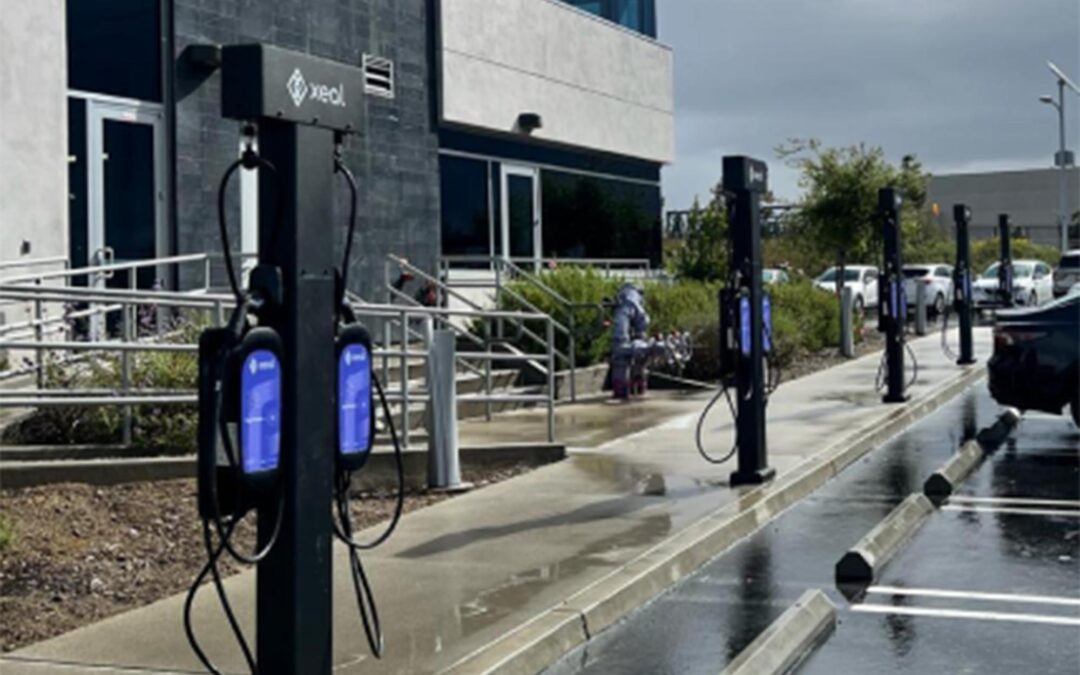Electric fleet charging has emerged as a key component in the roadmap to a sustainable future. With the growing emphasis on reducing carbon emissions, businesses are shifting from conventional vehicles to electric vehicles (EVs). The successful deployment of EVs in a commercial fleet, however, relies heavily on the right charging infrastructure. Let’s take a closer look at what the right charging infrastructure looks like here.
Understanding Electric Fleet Charging Infrastructure Basics
Typically, the structure of an electric fleet charging system involves various interconnected components, namely, the charging stations, charging units, and auxiliary power supplies. These elements work together to provide safe and efficient charging for multiple vehicles. The complexity of the infrastructure can vary based on the EV fleet’s size, the amount and type of usage, and the site location.
As an electrical contractor involved in establishing charging networks, it is crucial to understand the dynamics of different charger types and their appropriateness for the intended usage. A well-thought-out project plan can considerably lower project costs in the long term while ensuring seamless EV fleet charging operations.
Types of EV Chargers and Their Applications
Commercial fleets have a range of EV charger options to choose from, each offering distinct features and benefits. The most common ones are Level 1, Level 2, and DC Fast Charging stations. Level 1 units offer basic functionality and are best suited for private charging or home charging scenarios. Level 2 chargers, on the other hand, support faster charging and feature advanced functionalities, making them ideal for public charging and fleet vehicles.
Then there’s DC Fast Charging, a high-power electric fleet charging solution designed for rapid charging of multiple vehicles. These chargers significantly reduce the charging time compared to their Level 1 and Level 2 counterparts, thus optimizing the availability and utilization of EVs in commercial fleets.
Key Components of Fleet Charging Systems
Developing an efficient charging infrastructure entails understanding key components that form the backbone of EV fleet charging. These include charging units, auxiliary power, power links, and charging management software. Charging units convert the supply into a form suitable for vehicle batteries, while auxiliary power units provide additional energy for various auxiliary functions when the vehicle is parked.
Power link is a portable charging unit that facilitates EV charging for transient fleets or remote locations. A well-integrated charge management system helps efficiently manage the charging level, time, and cost, ensuring optimal fleet utilization and lower operational costs.
Smart Charging Technology and Management Solutions
Advanced technologies play a pivotal role in shaping the EV charging infrastructure landscape. Solutions such as smart charging are equipping operators with enhanced control over their EV fleet charging strategies. Smart charging works by adjusting the charging speed or time based on various factors, offering greater control over electricity distribution.
Another frontier in the field is the deployment of smart charge management solutions by entities like National Grid Ventures. By integrating with the national grid, these systems can effectively manage electricity transmission, minimizing disruptions and facilitating optimal use of available charging equipment.
Business Benefits of Investing in Fleet Charging Infrastructure
The move towards fleet electrification is not just a step towards a sustainable future, but it also offers compelling business benefits. Understanding these advantages can aid decision-makers in their strategic planning and investment decisions.
Reduced Total Cost of Operations
Transitioning to electric fleets opens avenues for cost optimization. For instance, the total cost of operating electric trucks is significantly lower than their gasoline counterparts due to lower fuel and maintenance costs. Additionally, leveraging smart technology can further streamline operations and reduce overall costs.
Enhanced Environmental Compliance and Sustainability Goals
In an era of heightened environmental awareness, implementing electric fleet charging infrastructure helps businesses meet regulatory requirements and sustainability goals. By investing in EVs and their accompanying charging networks, companies can significantly reduce their carbon footprint, contributing to a more sustainable future.
Improved Fleet Management Efficiency
Modern charging equipment comes with integrated management software that provides real-time information on vehicle status, charging levels, and equipment performance. This crucial data allows for more intelligent decision-making, improved efficiency, and enhanced fleet management.
Learn more about how Lonestar Integrated Solutions can support your EV fleet below.
Revenue Generation Through Public Charging Access
Businesses can also monetize their investment by providing public charging access. By offering auxiliary power to the public, they can create an additional revenue stream. This not only helps recoup the infrastructure project costs but also contributes to the growth of a comprehensive public charging network.
Planning and Implementing Charging Infrastructure
When transitioning to electric fleet vehicles, strategic planning and implementation of a charging infrastructure are crucial. Key considerations should be given to factors such as site location, project costs, and long-term sustainability.
Investing in appropriate EV charging infrastructure can significantly lower costs in the long run. Implementing a well-planned charging infrastructure ensures that the electric fleet always has access to the required auxiliary power. This reduces downtime, improves efficiency, and supports your fleet electrification project.
- Charger Type: Depending on the type of electric vehicle in your fleet, different EV chargers may be needed. EV charger types range from Level 1 and Level 2 chargers to DC fast charging stations.
- Site Location: The location of charging stations should be strategically planned. Consider access to power links and the national grid, as well as convenience for the fleet operation.
- Project Costs: Understanding the project costs related to installing and operating charging stations beforehand helps plan the budget effectively.
Before integrating electric vehicles into your fleet, it’s crucial to have a comprehensive EV fleet charging solutions strategy in place. This leap from conventional vehicles to electric fleets promotes a sustainable future without compromising operational efficacy.
Site Assessment and Power Requirements
Incorporating electric vehicles into a fleet requires a precise understanding of power requirements. An assessment should be carried out to determine the capacity of the existing electrical system and to plan for future scalability.
It is vital to have an experienced electrical contractor perform a thorough site assessment and estimate the power requirements of the charging equipment. They should consider the required charging level, the number of maximum simultaneous charging units, and any possible future expansion.
- Power Requirements: This includes checking the maximum power load that the site can handle, and the auxiliary power needed for charging multiple vehicles simultaneously.
- Network Compatibility: Ensure that the charging equipment is compatible with the electricity transmission and distribution standards of the national grid ventures.
- Regulation Compliance: Make sure that the project plan follows all the laws and regulations governing electric vehicle charging infrastructure.
Identifying potential obstacles regarding power requirements early on helps avert future complications and ensure the smooth operation of your EV fleet charging infrastructure.
Integration with Existing Fleet Management Systems
The transition to electric fleets should not disrupt the pre-existing fleet management systems. Ensure that the newly installed charging stations and equipment can seamlessly integrate with these systems.
Collaborate with your vehicle provider to implement a thorough project plan. This may involve various elements such as telematics solutions, integrated dashboard monitoring, and data-backed decision-making processes.
- Connectivity: Charging stations should be connected to the fleet management system to provide data on usage, costs, and maintenance alerts.
- Data Insights: Collect data like charge times, power usage, and vehicle usage to optimize operations, prevent downtime, and reduce costs.
- Training: Training should be provided to the team members involved in managing and operating the EV fleet and charging infrastructure.
Successfully integrating the EV charging infrastructure with existing fleet management systems ensures efficient operations, boosts productivity, and reinforces the commitment to a more sustainable future.
Take Your Fleet Into the Future With Lonestar
Lonestar is here to assist companies in transitioning to electric fleets and developing a robust charging infrastructure. Our solutions are designed to seamlessly align with your EV fleet charging strategy while offering cost-effective, reliable, and flexible options.

